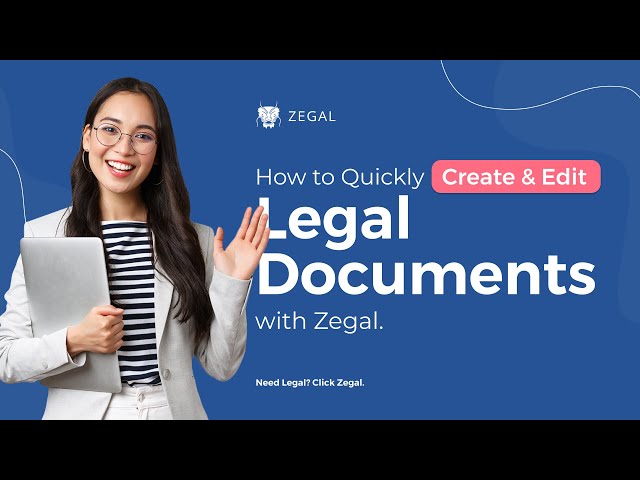How to generate a Memorandum of Understanding (MOU)
Is a Memorandum of Understanding (MOU) legally binding?
Also known as a letter of intent, a Memorandum of Understanding (MOU) is a non-legally binding agreement between two or more parties outlined in a formal document that sets out the willingness and intent of the parties to move forward with a contract.
A Memorandum of Understanding, or MOU, can be defined as an agreement between parties and can be bilateral (two) or multilateral (more than two parties). It expresses a common understanding between the parties in question and interprets the intent of a common line of action.
The MOU is the starting point for negotiations as it defines the scope and purpose of the talks between the parties since such agreements are usually used in high-stakes business dealings such as merger talks.
What is the purpose of a Memorandum of Understanding?
A Memorandum of Understanding (MOU) is an expression of agreement to proceed. It indicates that the parties have reached an understanding and are moving forward. Although it is not legally binding, it is a serious declaration that a contract is imminent and there is a mutual agreement on the content of the upcoming contract.
Memorandum of Understanding guidance
A Memorandum of Understanding (MOU) clearly outlines specific points and key elements of an understanding between the parties.
It names the parties, describes the project they agree on, defines its scope, and details each party’s future and current roles and responsibilities.
While not a legally enforceable document, the Memorandum of Understanding (MOU) is a significant step because of the time and effort involved in negotiating and drafting an effective document.
The participating parties need to reach a mutual understanding to produce an MOU. In the process, each side learns what is most important to the others before moving forward.
How to create a Memorandum of Understanding (MOU)
The process usually begins with each party effectively drafting its own Memorandum of Understanding (MOU) that consists of its ideal or preferred outcome, what it believes it has to offer to the other parties, and what points may be non-negotiable on its side.
An initial draft is then written, after which representatives from each party meet to discuss the details. Memorandums of Understanding (MOU) often list communication expectations to help the mediation process.
During this time, agreements regarding the timeline for when the Memorandum of Understanding (MOU) takes effect are discussed.
Agreements outlining how or when a party can terminate the understanding are also decided. This is when a party inserts disclaimers, restrictions or privacy statements, as desired.
Once discussions are finished, a final MOU is drafted and signed.
The contents of an MOU include but are not limited to the scope and intended action of the MOU, the project, and the names of the parties and their respective responsibilities.
Other content might include the length of the agreement, when the agreement begins, and when or how either party can terminate the agreement.
Also, an MOU can contain contact information for the parties involved and possible dates for performance reviews.
What to include on a Memorandum of Understanding template
MOUs are often used to establish the framework for a future, more detailed contract or to formalise a partnership or joint venture. They specify the parties involved, their responsibilities, the scope of the project or endeavour, timelines, and other key elements.
An MOU is typically less formal than a contract and may need to have the legal enforceability of a contract. However, some MOUs can carry a degree of legal weight if they include terms and conditions intended to be legally binding.
Here are some common elements often found in an MOU:
- Introduction/Background: Briefly describe the context and why the parties enter an MOU.
- Parties Involved: Identifies the entities or individuals in the agreement.
- Objectives: Outlines the goals and objectives the parties hope to achieve through collaboration.
- Scope of Work: Details the roles and responsibilities of each party, what is expected, and what is out of scope.
- Terms and Duration: Specifies the time the MOU will be effective and under what conditions it can be terminated.
- Resources: Describes any resources, financial or otherwise, that will be committed by each party.
- Confidentiality: States whether any information shared will be confidential and under what conditions.
- Dispute Resolution: This may outline procedures for resolving disagreements or misunderstandings.
- Signatures: Usually includes a space for the parties’ signatures, often with a date.
- Attachments/Appendices: Any additional documents, schedules, or materials referenced in the MOU.
What is a Letter of Intent?
A Letter of Intent (LOI) is another name for an MOU.
It serves as a preliminary agreement, capturing all critical information regarding the imminent business dealings between both parties.
An LOI is a non-binding memorandum encapsulating the essence of negotiations to facilitate the future crafting of a legally binding contract.
The relevance of a Letter of Intent
Whether you know it as a Memorandum of Understanding, a Heads of Terms, or a pre-contract, the Letter of Intent serves a common purpose: it streamlines initial negotiations and identifies issues requiring resolution.
A Letter of Intent includes critical elements like the core components of the future contract, the timeline for its signing, and even the protocols for further negotiations.
The document can propel contract negotiations forward, saving you hours of potential back-and-forths and costly misunderstandings.
Is a Letter of Intent legally binding?
An LOI doesn’t constitute a legally binding agreement. It serves as a prelude to a formal contract, encapsulating the goodwill and intent of both parties to proceed on agreed terms.
This preliminary nature makes it ideal for short-term use, bridging the gap between verbal agreements and formal contracts.
Crafting a robust Letter of Intent
A well-articulated LOI must address essential aspects that require resolution before a formal contract can be drafted.
It should clearly define the parties involved and the commitments made, thereby minimising the risk of future disagreements.
Research the counterpart thoroughly, adopt a professional tone, and conclude with a compelling call to action.
Advantages & disadvantages of using a Letter of Intent
With a Letter of Intent, sellers can gauge genuine buyer interest while buyers can effectively and efficiently negotiate important details like representations, warranties, and indemnities.
However, it’s worth noting that an LOI can sometimes result in protracted negotiations, locking both parties in limbo.
Types of Letters of Intent
- Business LOI: Sets the stage for a formal business agreement.
- Employment LOI: Expresses a job seeker’s intent to prospective employers.
- Educational LOI: Utilised by students during application processes or for athletic commitments.
Why choose Zegal’s Letter of Intent template?
Drafting a Letter of Intent has never been simpler, thanks to Zegal’s professionally curated templates.
Save yourself the headaches, hours of paperwork, and uncertainties. With Zegal, you have assured compliance and efficiency at every step.
Why you need A Letter of Intent
A Letter of Intent isn’t just a document; it’s a catalyst that drives negotiations forward, defining the terrain of what’s negotiable and what’s not.
It’s a time-saving, cost-effective tool that aligns all parties toward a common goal.
Remember, an LOI serves as a stepping stone to a formal contract; hence, getting it right the first time is crucial.
With Zegal, not only do you save time, but you also gain peace of mind.
Ready to create your Letter of Intent?
Don’t leave your future dealings to chance. Secure your interests today with Zegal’s Letter of Intent template.
Stay compliant with the Zegal template library
Zegal legal template are meticulously crafted with the precision of AI and the expertise of seasoned human lawyers, providing a unique blend of speed and reliability.
You can trust that Zegal agreements are legally sound and fully compliant with current regulations.
Whether you're a startup, SME, or a larger enterprise, Zegal contract management will automate and speed up your legal processes.
Using Zegal will reduce risk, save money, and improve efficiency. Let us take care of the paperwork so you can focus on running your business.
Don’t compromise on speed or compliance. Stay secure, compliant, and efficient with Zegal.







